What Is The Difference Between An Academic CV And An Industry Resume?

When I was in academia, I thought that my CV (curriculum vitae) was worth its weight in gold.
I believed that my entire career came down to what was in this document.
My self-worth was tied up in how much information I could stuff in my CV and how many letters of recommendation I could get.
This ended up being one of the biggest career mistakes I ever made.
At the end of my graduate school career, I decided to transition into industry.
Soon after, I started uploading my CV to as many job sites as I could find.
Of course, I heard nothing back.
It wasn’t until I realized that my CV was worthless in industry (as were my letters of recommendation) that things started to change.
My CV needed to be specific for the kind of job I wanted and the academic format just made it invisible.
It was too long, it was too linear, and I wasn’t sending it to the right people.
Eventually, I whittled my CV down to a two-page industry resume and started sending it directly to hiring managers and recruiters.
I also crafted my resume into a persuasive marketing document, NOT a peer-reviewed timeline of my work.
This paradigm shift made all the difference and I was soon offered the industry job I wanted.
How An Academic CV Is Different From An Industry Resume
When transitioning from academia to industry, you will need to trade in your CV for an industry resume.
When it comes to comparing an academic CV to an industry resume, the biggest difference is in overall length and depth.
While it may be acceptable in academia to have a CV that covers several pages, in industry you are expected to keep your industry resume to one page (or at the most, two pages).
This is true whether or not you’re sending your resume to a hiring manager or a recruiter.
An academic CV is typically very comprehensive: covering aspects of education, employment, publications, and training, in detail.
Your academic CV is like a peer-reviewed timeline of your work history, whereas an industry resume is a persuasive marketing document meant to showcase your biggest professional achievements.
For example, your CV will discuss in detail the various methodologies you used throughout your scientific career, including extensive scientific nomenclature.
Your industry resume, on the other hand, will simply list and quantify your professional results, excluding any scientific or industry-related jargon.
The goal of any industry resume is to help employers see the value you could bring to their organization.
Companies want to understand what it is they will get from you, specifically, if they were to hire you.
They want to know the exact quantifiable results you have achieved in the past for other organizations and therefore will achieve in the future for their organization.
You need to use the space available on your resume to spell out these outcomes clearly.
Why You Need More White Space On An Industry Resume
An eye-tracking study by The Ladders showed that hiring managers and recruiters spend an average of just 5-7 seconds reading an industry resume.
You have less than 7 seconds to make a strong impression.
Overall, the study’s “gaze tracking” technology showed that recruiters spent almost 80% of their resume review time on only six data points: including the applicant’s professional summary, current title and company, previous title and company, previous position start and end dates, current position start and end dates, and education.
Beyond these data, recruiters merely skimmed for keywords to match the open position.
The rest of the resume’s explanatory content was completely ignored.
No one in industry is going to peruse through multiple pages of an academic CV, no matter how impressive your accomplishments are.
Likewise, Applicant Tracking System software will spend even less time scanning your resume for keywords.
The Wall Street Journal reported that up to 90% of large companies use these software systems to filter through resumes because of the sheer volume of applicants competing for each job.
These systems filter out at least 50% of applications before they even get close to being seen by a human.
For these and other reasons, your industry resume should have significantly more white space on it than you might expect.
In fact, you should increase the amount of white space as much as possible by indenting your bullet points and adding extra spaces between sections.

5 Sections Every PhD Resume Must Have
The most important part of your resume is the visual center.
A visual center starts 2 inches from the top of your resume and ends 2 inches below that.
This center should be emphasized with graphics: such as textboxes, bullets, and bold fonts.
Load the visual center with the value you will offer the company: such as across-the-board accomplishments, industry-specific skills, a summary of a highly successful project you lead, or even a clipping from a recommendation letter or news article about your work.
The visual center is often referred to as a professional summary, though some visual centers include additional parts of a resume.
In addition to this visual center or professional summary, you must include several other key sections on your industry resume.
Altogether, these sections are…
1. Professional Summary
As mentioned above, the first section is a professional summary that should include your top professional achievements listed as bullet points.
These achievements should be quantified and combined into no more than three bullets that each include multiple results.
Each bullet point should include a number (again, something quantified), a result (something preceded by the words “resulting in,” “as demonstrated by,” or similar), and ideally both a technical skill and transferable skill that led to the result.
2. Work Experience
The second section every industry resume must include is a list of your work experience.
Depending on the industry position you are seeking, this section will include information from two to five of your previous positions.
Entry-level industry resumes will include fewer positions while management-level or executive resumes will include more.
Likewise, each position heading in your work experience section will be accompanied by a variable number of results-oriented bullet points.
If you’re applying to entry-level industry positions, each heading should have three to five bullet points.
If you’re applying to senior management positions, each heading could have many more than five bullet points, including very descriptive text on past projects and past responsibilities.
3. Education
The third section every industry resume needs is simply the highest level of education you’ve achieved.
Do not waste precious space on your resume by listing more than your last major degree unless you have a secondary degree that is highly specific for the industry position you’re targeting.
The education section should only be near the top of an industry resume if you do not have any work experience whatsoever.
Keep in mind that graduate research and postdoctoral fellowships do count as work experience.
A common addition on academic CVs is a list of publications, but industry resumes should NOT include a formal list of publications unless specifically asked for in the job posting or by a recruiter.
Remember, hiring managers will only spend an average of 5-7 seconds on your resume.
If you have an impressive publication relevant to the position, or a publication that led to a patent, product, treatment, or breakthrough of some kind, highlight it in your professional summary.
Otherwise, simply mention the number of total publications you have achieved in your summary.
4. Technical Skills
The fourth required section is a bulleted list of your technical skills.
This list can be formatted into 2-3 columns and should include any relevant instrumentation, reagents, and software you have experience with, as well as any relevant certifications you have or methodologies you’ve mastered.
These may include information such as language or IT skills, or any particularly relevant training that is applicable to the position.
Remember, you need to also include your transferable skills on your industry resume, but these skills are best communicated through the bullet points in your professional summary and work experience sections.
5. Honors, Awards & Hobbies
The fifth and final section every industry resume must include is a short list of one or two bullet points describing any unique and special honors, awards, or hobbies you have.
This section should be used to highlight something other than your scientific background and technical skills.
You should use this section to differentiate yourself from other PhDs by highlighting a sport you play or have played, a hobby you have or had, or a volunteer organization or club you belong to.
Similar to putting a personal interest in your LinkedIn headline, putting a personal honor or hobby in this final section will humanize you to employers.
In transitioning from academia to industry, you will need to trade in your CV for an industry resume. What may have been relevant in an academic setting may be superfluous to a recruiter for an industry role. If you are already holding an industry position and are now seeking a management-level or senior management-level position, you must adapt your resume accordingly. The key is to always consider your audience and give them the information they want (or will actually read) in the format they want it in. By adding a crisp, clear, and results-oriented professional summary, a work experience section, an education section, a technical skills section, and an honors, awards, and hobbies section to your resume, you will ensure that hiring managers and recruiters get the information they want in the 5-7 second time frame you have to impress them.
If you’re ready to start your transition into industry, you can apply to book a free Transition Call with our founder Isaiah Hankel, PhD or one of our Transition Specialists. Apply to book a Transition Call here.

ABOUT ISAIAH HANKEL, PHD
CEO, CHEEKY SCIENTIST & CAREER SUCCESS MENTOR
Dr. Isaiah Hankel is the Founder and CEO of Cheeky Scientist. His articles, podcasts and trainings are consumed annually by millions of PhDs and other professionals in hundreds of different countries. He has helped professionals transition into top companies like Pfizer, Tesla, Amazon, Pearson, Google, Apple, Intel, Dow Chemical, BASF, Merck, Genentech, Home Depot, Nestle, Hilton, SpaceX, Syngenta, the CDC, UN and Ford Foundation.
Dr. Hankel has published 3X bestselling books and his latest book, The Power of a PhD, debuted on the Barnes & Noble bestseller list. His methods for getting PhDs hired have been featured in the Harvard Business Review, Nature, Forbes, The Guardian, Fast Company, Entrepreneur Magazine and Success Magazine.
More Written by Isaiah Hankel, PhD































